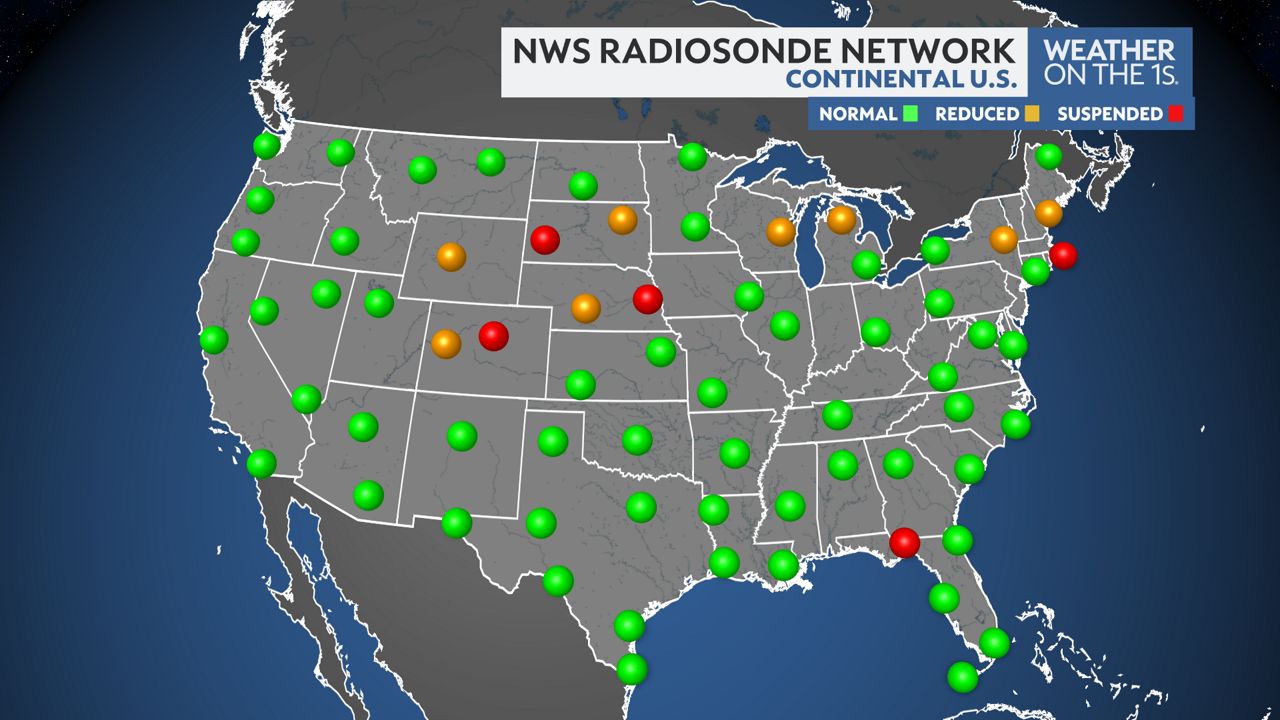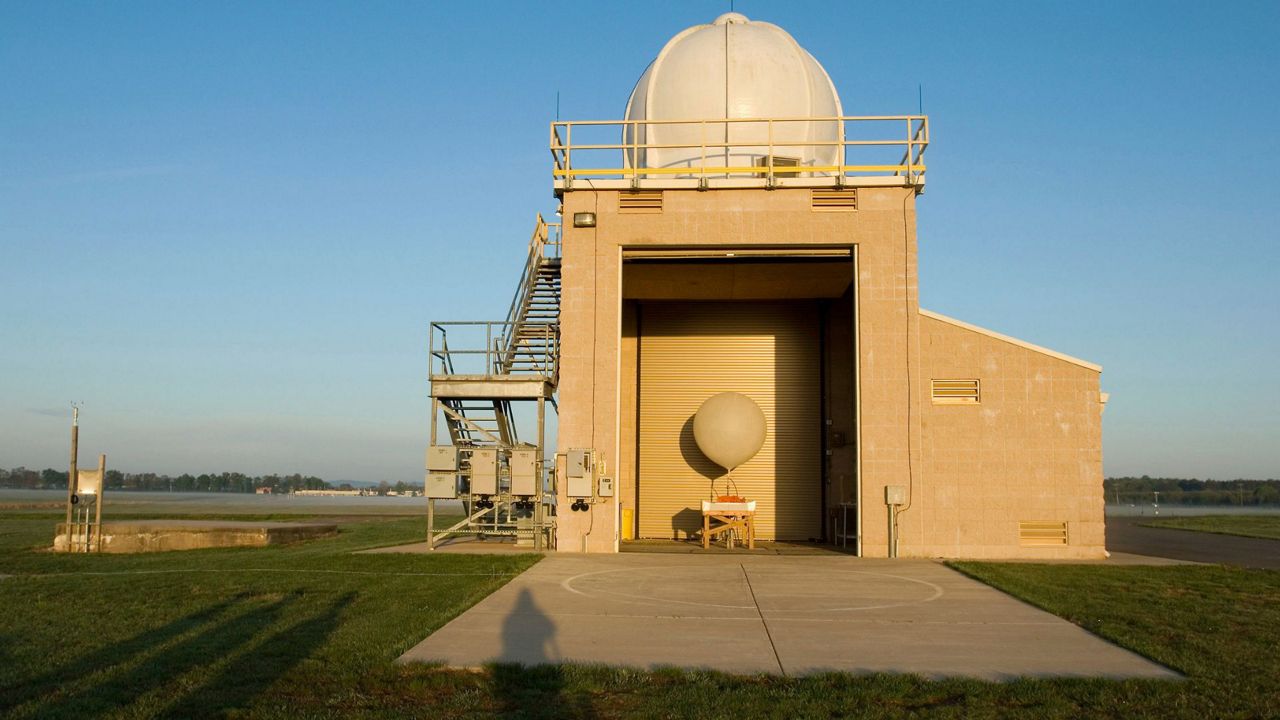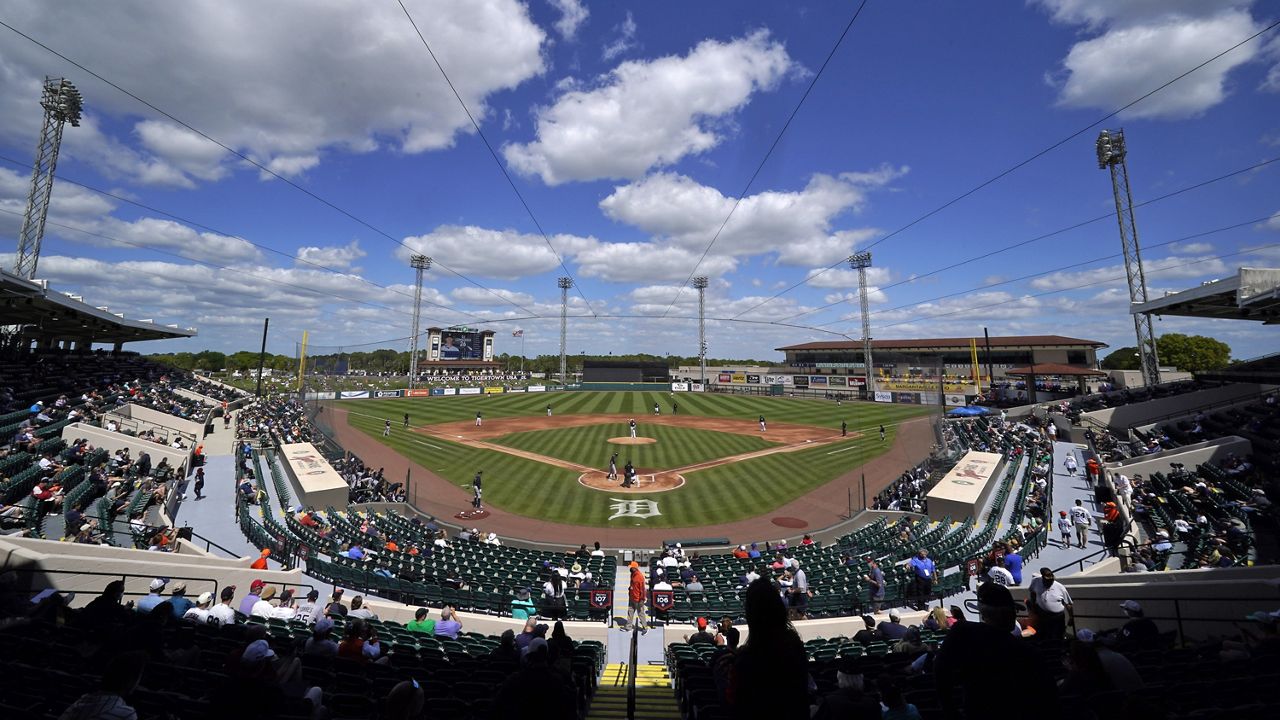The National Weather Service (NWS) announced that it is eliminating or reducing weather balloon launches across multiple offices around the country. This comes in response to NOAA layoffs and a lack of staffing necessary to continue regular launches.
The NWS launches weather balloons twice daily from more than 100 upper air sites across the United States, Caribbean and Pacific Basin. These balloons reach up to 100,000 feet in the atmosphere with a radiosonde attached to each balloon.
A radiosonde is an instrument that measures atmospheric data, including temperature, dew point, relative humidity, barometric pressure and wind speed and direction. The weather data that a radiosonde collects is just one piece of the puzzle that goes into weather models to help improve forecasts.
A press release from the NWS confirmed that it is temporarily suspending all weather balloon launches in Omaha, Neb., and Rapid City, S.D. due to a lack of Weather Forecast Office (WFO) staffing, effective immediately.
Along with eliminating launches from those two locations, the NWS is reducing its weather balloon launches down to one flight per day from multiple other sites, including Aberdeen, S.D., Grand Junction, Colo., Green Bay, Wis., Gaylord, Mich., North Platte, Neb. and Riverton, Wyo.

These cuts come in addition to NWS announcements earlier this year that it was reducing weather balloon launches in Albany, N.Y. and Gray, Maine because of staff shortages.
The NWS offices in Boulder, Colo. and Tallahassee, Fla. aren't launching balloons because of a nationwide helium shortage, and the weather balloon facility on Morris Island in Chatham, Mass. has suspended launches because the facility has been closed due to coastal erosion.
Bay News 9 Chief Meteorologist Mike Clay says, “these weather balloons may not seem important, but they are the basis for all the forecasts seen on apps, TV, everything from all weather sources. The more the better, we don’t need less data.”
“It might be hard to understand, but a weather balloon launched in Montana can help us forecast where a hurricane in the Caribbean might go,” Mike Clay adds.
It’s too soon to determine the impacts, but the reduction in launches across the Midwest and Great Plains is particularly concerning this time of year, as spring severe weather season ramps up in the coming months.
Our team of meteorologists dives deep into the science of weather and breaks down timely weather data and information. To view more weather and climate stories, check out our weather blogs section.
Reid Lybarger - Digital Weather Producer
Reid Lybarger is a Digital Weather Producer for Spectrum News. He graduated from Florida State University in 2015 with a Bachelor's of Science in Meteorology. He began his career in local TV news working across Mississippi, Louisiana and Florida for 7 years prior to joining Spectrum in 2022. He's excited for the opportunity to continue to inform the public about the latest weather news with Spectrum.






